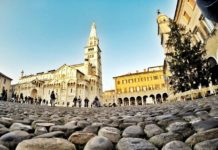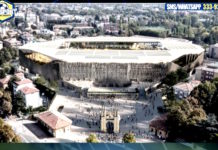Welcome to the world of the Reggia di Caserta Fountains, a masterpiece of architectural and landscaping excellence located in the heart of Southern Italy. This majestic complex of fountains, pools, and cascades, stretching over an area of 120 hectares, was created in the mid-18th century as a symbol of the power and grandeur of the Bourbon dynasty.
In this article, we will take you on a journey through the history and beauty of the Reggia di Caserta Fountains, exploring their design, construction, and significance in the cultural heritage of Italy. We will also provide you with practical information on how to plan your visit and make the most of this unforgettable experience.
If you’re planning a visit to the Reggia di Caserta, it’s essential to purchase your Reggia di Caserta tickets in advance to avoid long queues and ensure entry to the Palace and its magnificent gardens. The ticket prices vary depending on the time of year and the type of ticket you require, but they are generally reasonable, and the experience is worth every penny. You can book your Reggia di Caserta tickets online or purchase them on-site at the ticket office.
The Design and Construction of the Reggia di Caserta Fountains
The Reggia di Caserta Fountains were designed by the famous Neapolitan architect Luigi Vanvitelli, who was commissioned by King Charles III of Bourbon to create a grand palace and park that would rival the Palace of Versailles in France. Vanvitelli’s vision was to create a harmonious union between architecture, sculpture, and nature, using water as a fundamental element to enhance the beauty and majesty of the landscape.
The construction of the fountains began in 1752 and lasted for almost a decade, involving the work of hundreds of craftsmen, sculptors, and hydraulic engineers. The fountains were supplied by a vast network of aqueducts and pipes, which brought water from the nearby mountains and fed the system of waterworks that animated the entire park.
The fountains of the Reggia di Caserta are divided into three main areas: the Great Fountain, the Fountain of Diana and Actaeon, and the Fountain of Venus and Adonis. The Great Fountain, located in the central axis of the park, is the most impressive of them all, featuring a monumental waterfall cascading down a series of terraces and pools, flanked by two symmetrical sets of stairs and crowned by a grandiose statue of Neptune.
The Fountain of Diana and Actaeon, situated in the eastern part of the park, represents the mythological story of the goddess Diana and the hunter Actaeon, who was transformed into a deer and killed by his own hounds. The fountain consists of a large oval basin surrounded by a circular colonnade, with sculptures depicting the various episodes of the myth.
The Fountain of Venus and Adonis, located in the western part of the park, is dedicated to the love story between the goddess Venus and the handsome youth Adonis, who was killed by a wild boar while hunting. The fountain features a central pool with a sculpture of Venus and Adonis, surrounded by a circular arcade adorned with allegorical statues.
The Significance of the Reggia di Caserta Fountains
The Reggia di Caserta Fountains are not only a stunning example of Baroque art and architecture, but also a testimony to the political and cultural ambitions of the Bourbon dynasty. The complex was conceived as a grandiose propaganda machine, designed to impress visitors with the wealth, power, and artistic achievements of the Bourbon court.
The fountains also have a strong symbolic and allegorical meaning, representing the triumph of nature over artifice, the union between water and fire, and the fusion of pagan and Christian mythology. The fountains were designed to evoke emotions and sensations in the spectator, creating a multisensory experience that combined visual, auditory, and tactile stimuli.
In addition to their aesthetic and cultural value, the Reggia di Caserta Fountains also have an important environmental and hydraulic significance. The park was designed to integrate seamlessly with the surrounding landscape, using water as a natural regulator of temperature, humidity.



















































